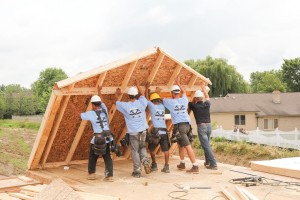
A former timber treatment site in Bungendore has been approved for residential development despite it being contaminated with cancer causing substances. Source: The Canberra Times
Despite the contamination, it has been 11 years since the Environment Protection Authority tested the site at 65 Forster Street, after deeming it unnecessary in 2006 because it was left undisturbed. Koppers had moved operations from the Bungendore site in 1982.
The Bungendore site has remained vacant since.
The Queanbeyan-Palerang Regional Council conditionally approved 40 units of seniors housing on the site at Wednesday’s council meetsing.
The council’s own documents state “arsenic was present in shallow soils at concentrations exceeding the applicable screening criteria for residential land use at a number of locations”.
“Elevated levels of other metals (including copper, chromium, nickel and zinc) were detected in soils in one or more locations above the current Ecological Investigation Levels.”
“The environmental site assessment also concluded that concentrations of contaminants in groundwater were relatively low and were regarded as background levels found within the geology of the area.”
The site will undergo remediation, subject to oversight by the council and a site auditor.
A spokesman for the EPA said as a result of the decision to stop testing the site in 2006, “the EPA has not had any subsequent involvement or produced any further studies”.
The spokesman said a freedom of information request would be the quickest way to access the final report in 2006, which was deemed an “internal” document.
A former Palerang councillor Peter Marshall has slammed the decision by the Queanbeyan-Palerang Regional Council to allow people to live at the site, despite the promise of remediation.
He said during his almost four years as a councillor, the site was never considered suitable for residential development because of the extent of contamination.
Mr Marshall was sacked as a councillor by the state government in May last year during the merger process of Queanbeyan and Palerang.
“The last suggestion before this was for parking,” Mr Marshall said. “[The former council’s view was that] the land was contaminated with copper and arsenic and would be unsuitable for permanent residential population.”
Mr Marshall said he was curious as to how the council’s position could have changed so dramatically.
The Canberra Times reported that water in the street gutter outside the Bungendore timber treatment plant in 1982 contained 40 times the legal limit of arsenic.
In 1981, the then-NSW State Pollution Commission ordered testing of groundwater at the site fearing contamination.
Bungendore Residents Association spokeswoman Alix Burnett said they were concerned about the decision, which was approved conditionally subject to remediation, a site audit, and changes relating to fencing and set backs.
She said the group was denied access to copies of an environmental impact statement relating to the development application, due to copyright issues.
“We would have liked to have obtained a copy of the EIS so we could then pass it along to third parties for their evaluation of that study,” Ms Burnett said.
The group’s frustration, she said, stemmed from a lack of information about the site, when “the process should be open and transparent”.
“We think it requires a lot more scrutiny. We don’t know the extent of the contamination, and that’s what needs to be transparent for the community to understand.”
A council spokesman said based on the information provided, the council was satisfied the site could be remediated and development work could begin, subject to an audit statement. He said a planning certificate “would generally contain a statement that the land has been remediated alerting potential purchasers to the history of the site”.





